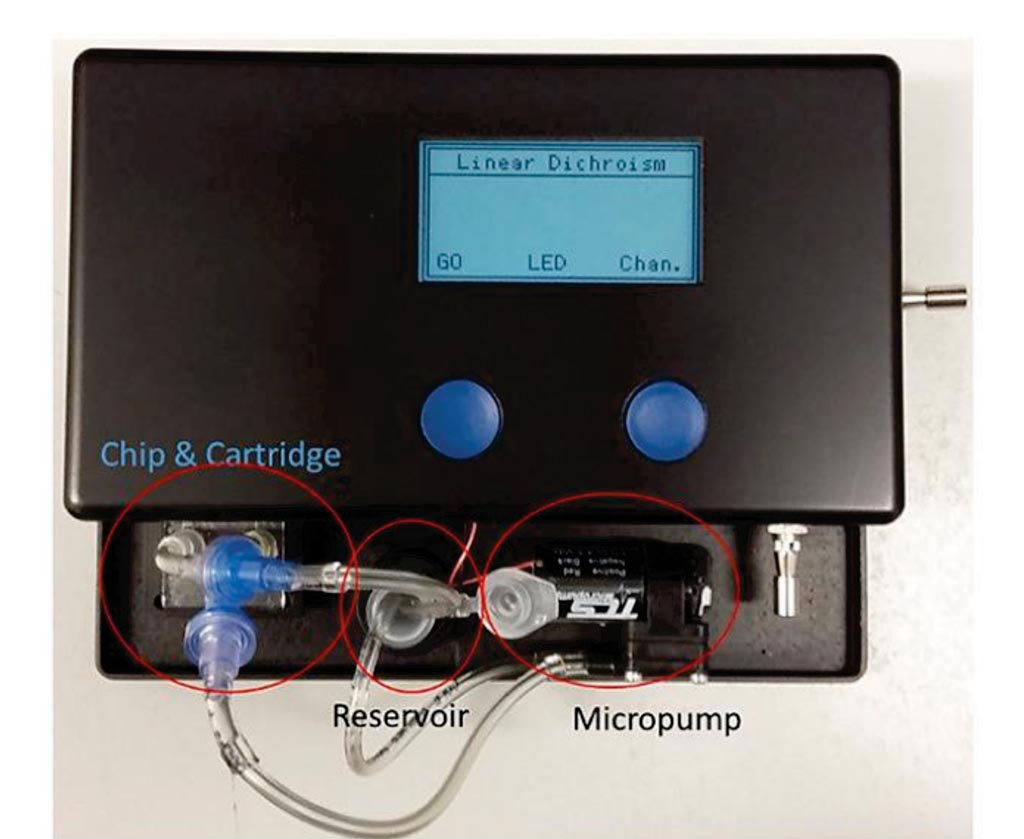Cartridge Developed to Detect Antibiotic-Resistant Bacteria
By LabMedica International staff writers
Posted on 03 Jan 2018
A diagnostic platform that exploits the phenomenon of linear dichroism (LD) for a number of uses including the detection of antibiotic resistance in infections is being developed. A key attribute of this technology is that it can measure multiple targets simultaneously in the same sample.Posted on 03 Jan 2018
The technology is based on the arrangement of long, thin nanometer-sized molecules in a microfluidic chamber inside a test cartridge, which is self-contained, sterile, and holds all the reagents needed to perform a test. Scientists use a handheld external optical reader, to detect the molecules' alignment in the chamber by shining polarized light from different angles into the cartridge.

Image: A handheld rapid diagnostic device for detecting antibiotic resistant bacteria (Photo courtesy of Linear Diagnostics).
The technology was created by Linear Diagnostics Ltd (Birmingham, UK), which is a spin-off from the University of Birmingham (Birmingham, UK). Scientists can modify the molecules with detection probes that bind to targets in solution. If bacteria are present in the sample, the probes bind to various bacterial targets, changing the alignment of the attached molecules in the microfluidic flow. The attached probes can be antibodies that can recognize specific bacterial cell surface markers, for instance, or short bits of DNA including genetic sequences that recognize specific bacterial transcripts or genes that code for antibiotic resistance.
The Linear Dx's tests can be used with urine and whole blood samples, since they do not require previous sample preparation, although the scientists emphasized that the company will initially focus on urinary tract infections (UTIs). While technology such as easy, rapid dipstick tests can provide an indication of bacterial presence, they lack the information on antibiotic resistance that Linear Dx's technology can provide. It is estimated the tests run on the platform will cost around USD 20 or GBP 15.
Matthew R. Hicks, DPhil, a cofounder and chief technical officer of the company, said, “Other molecular binding techniques need multiple processing steps like washing. In contrast, our platform is a single-step process, and can be adapted to a wide range of other applications in the future, including sexually transmitted infection (STIs) and tropical diseases. The reagents that we have developed enable us to use relatively low-cost hardware to give sufficient performance for the assays that we are developing.”
Related Links:
Linear Diagnostics
University of Birmingham














